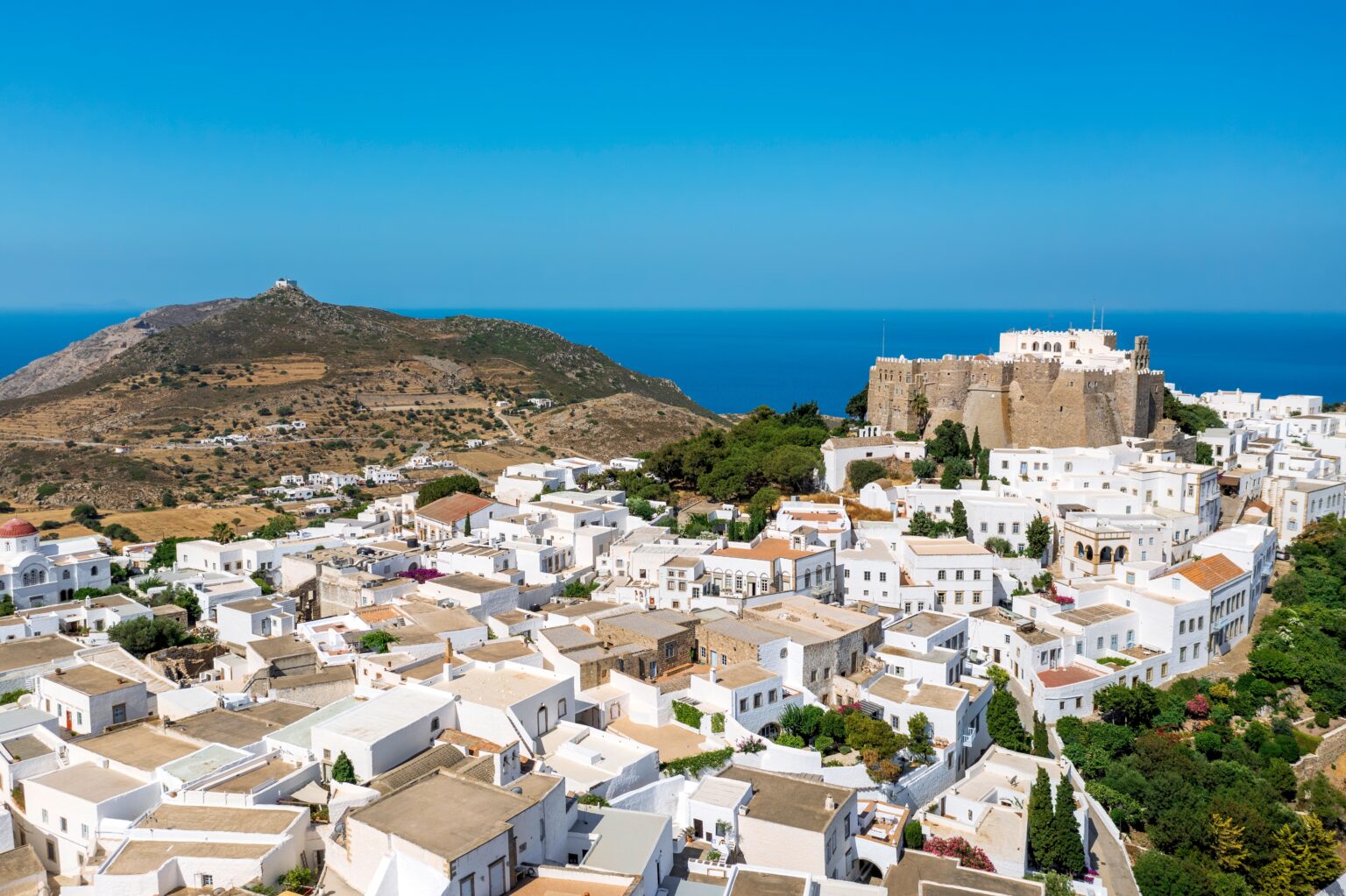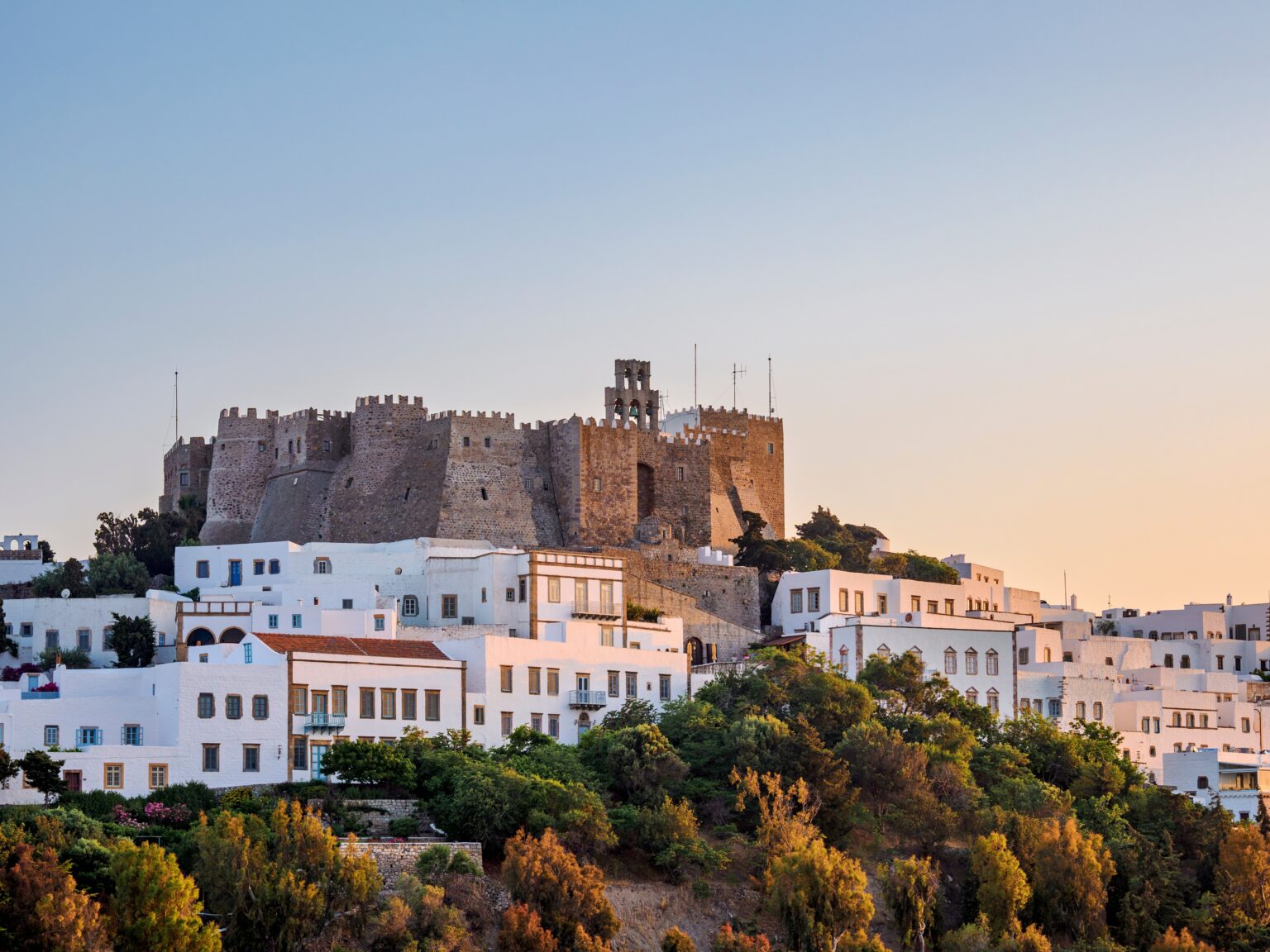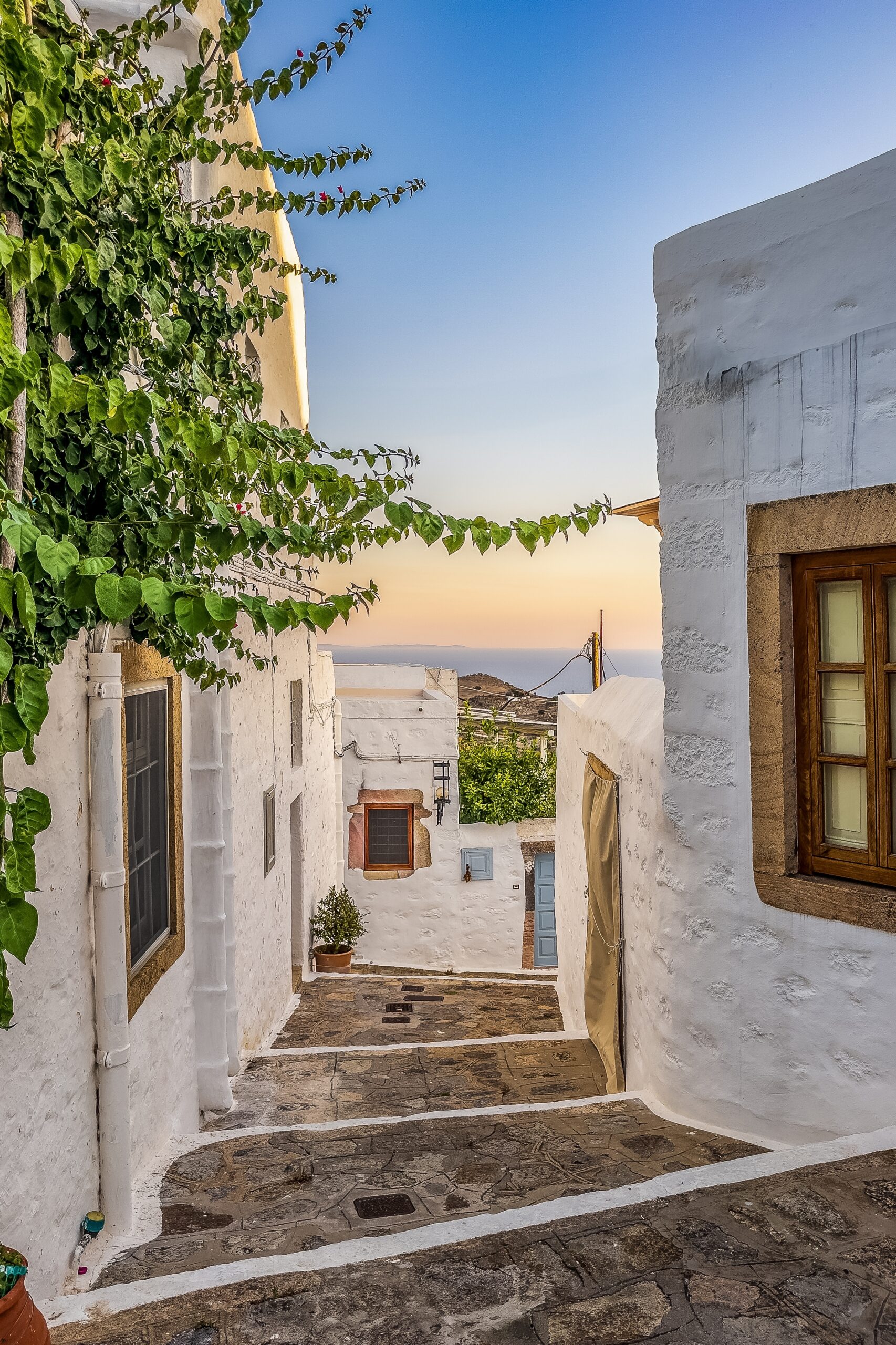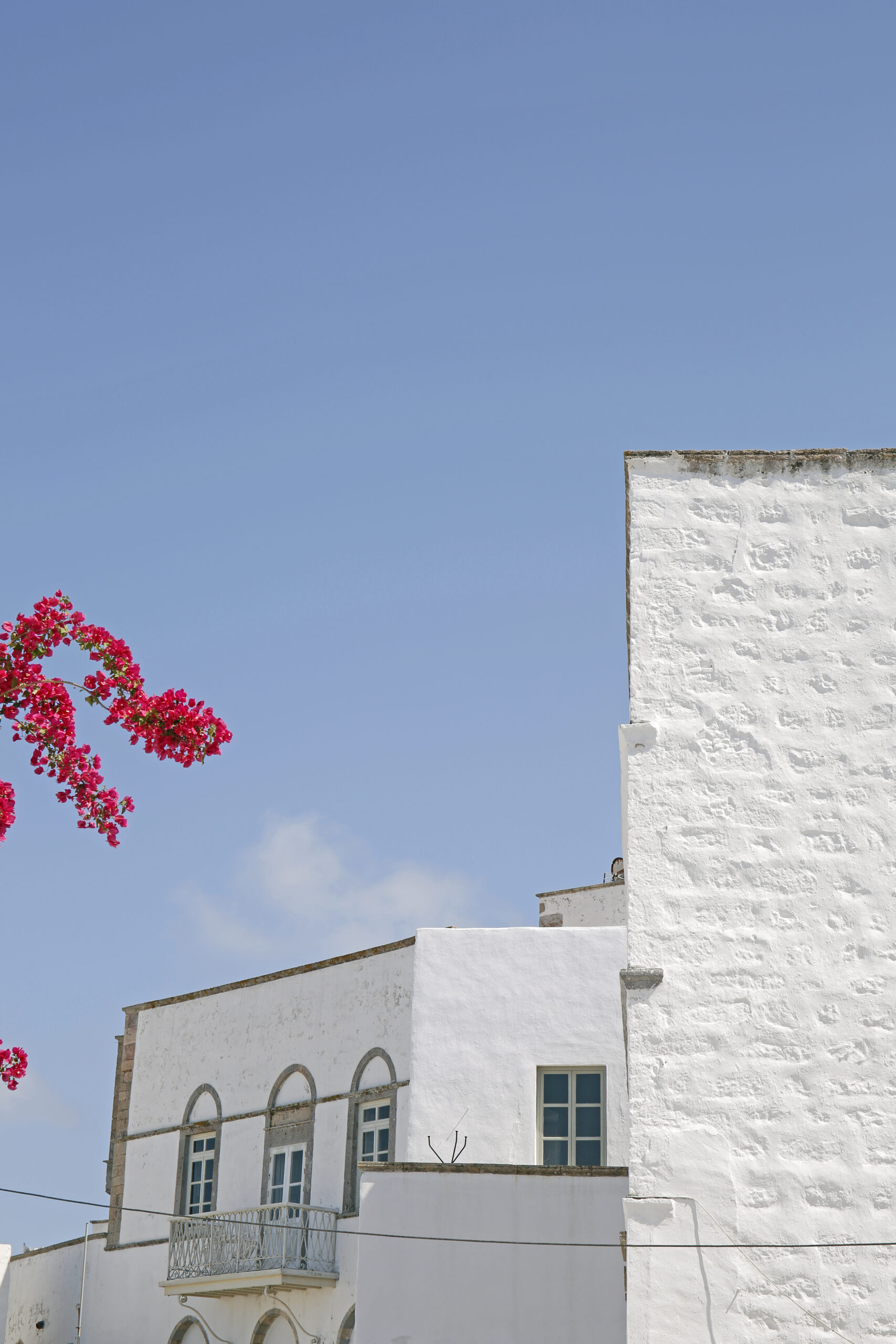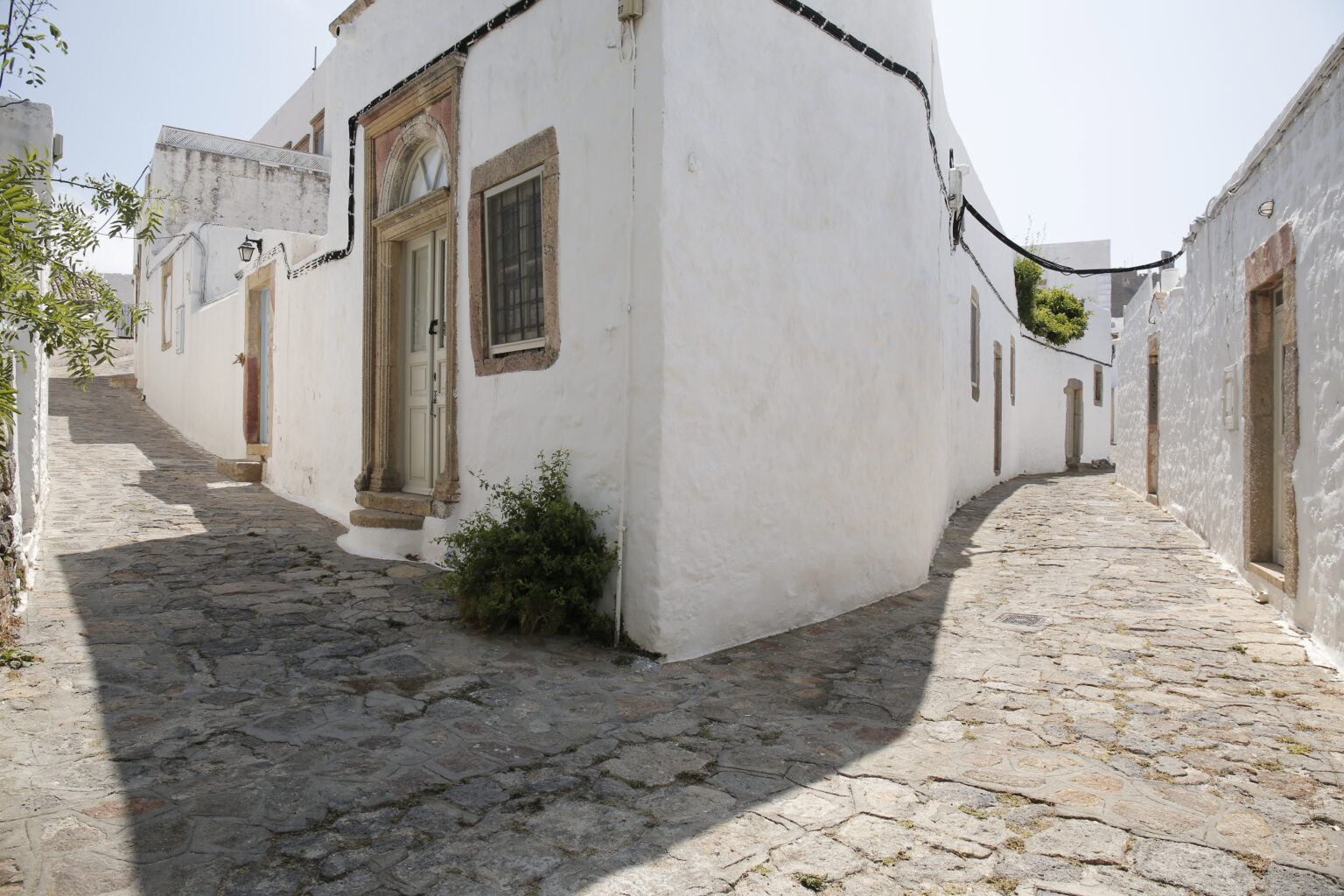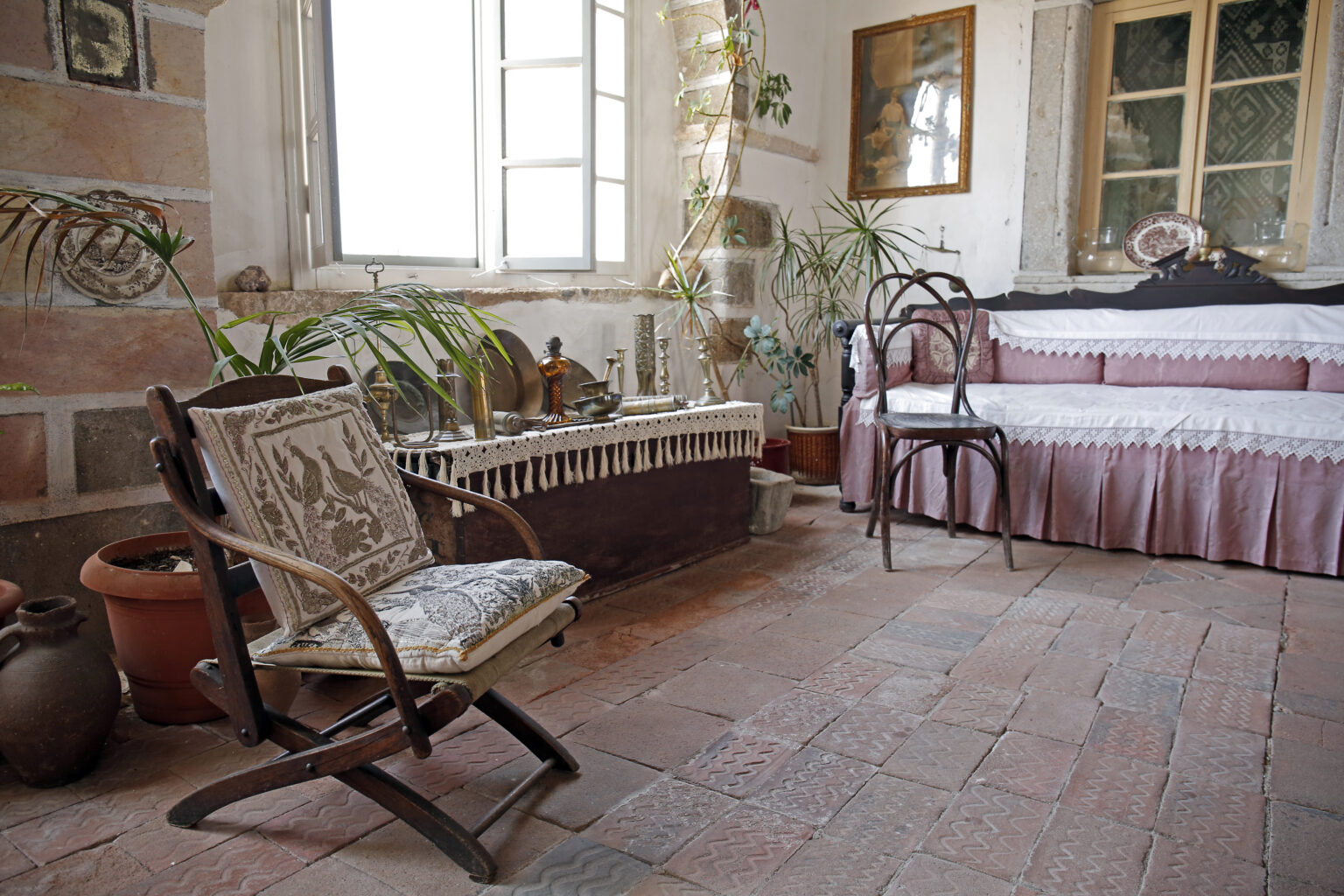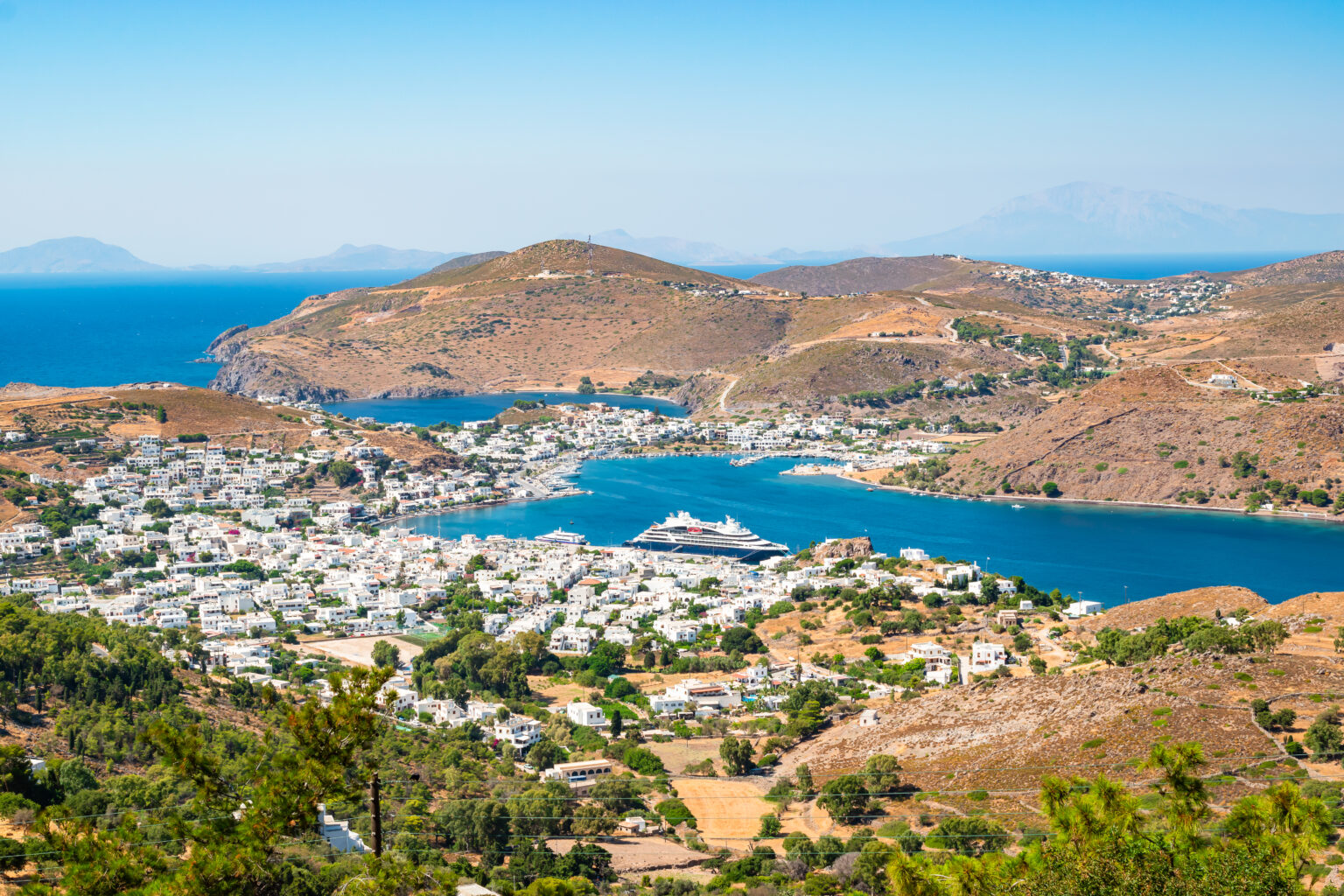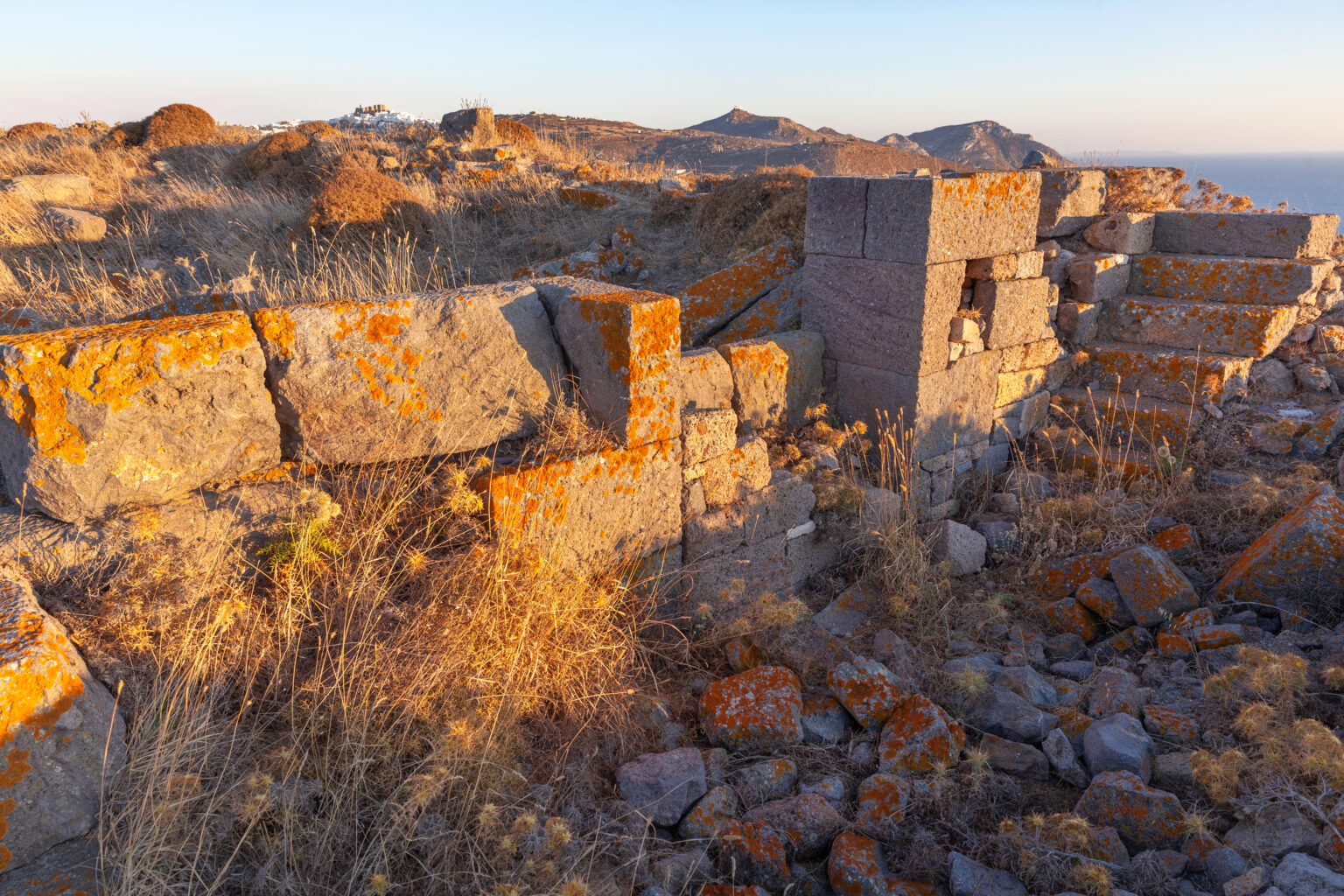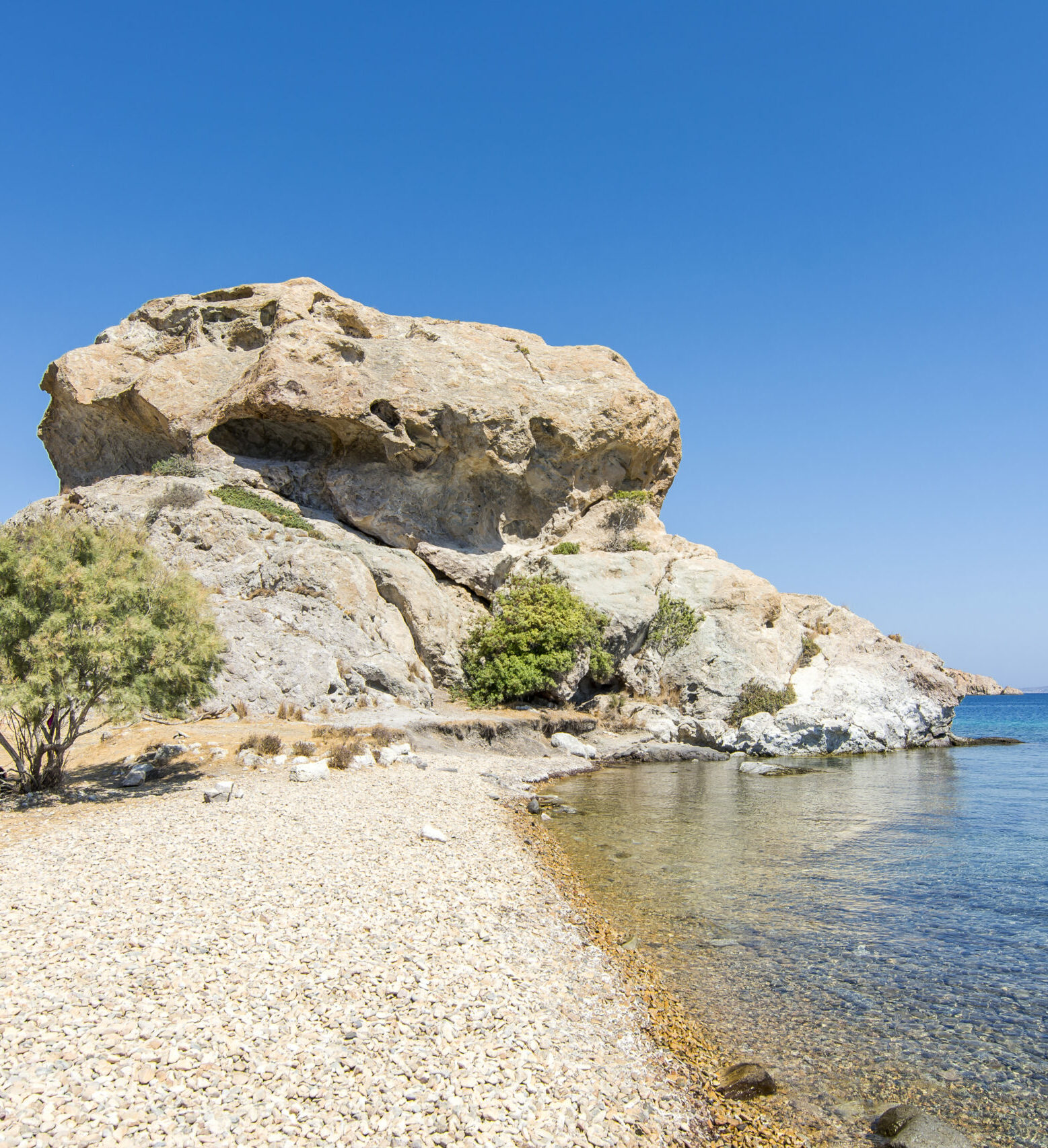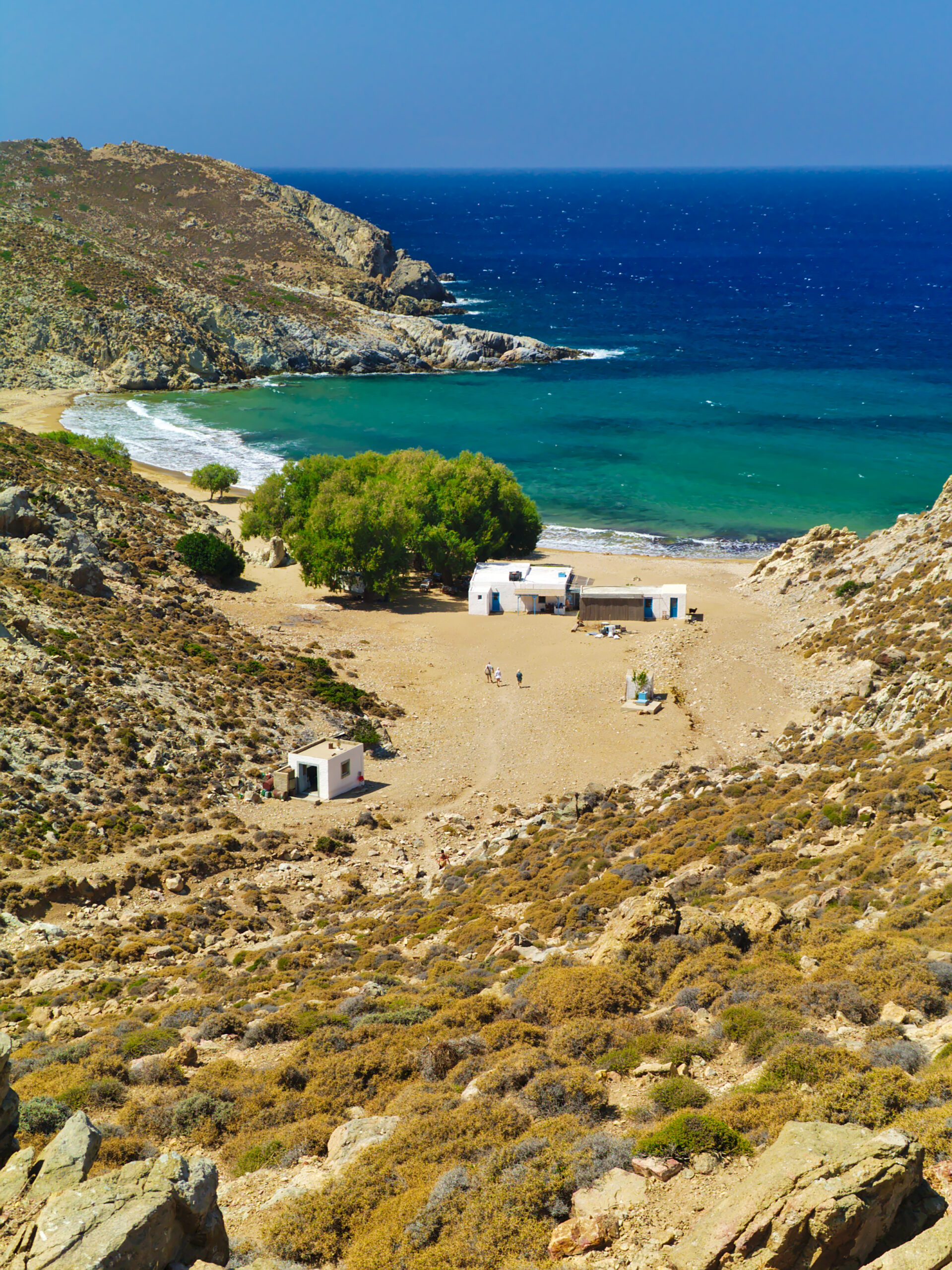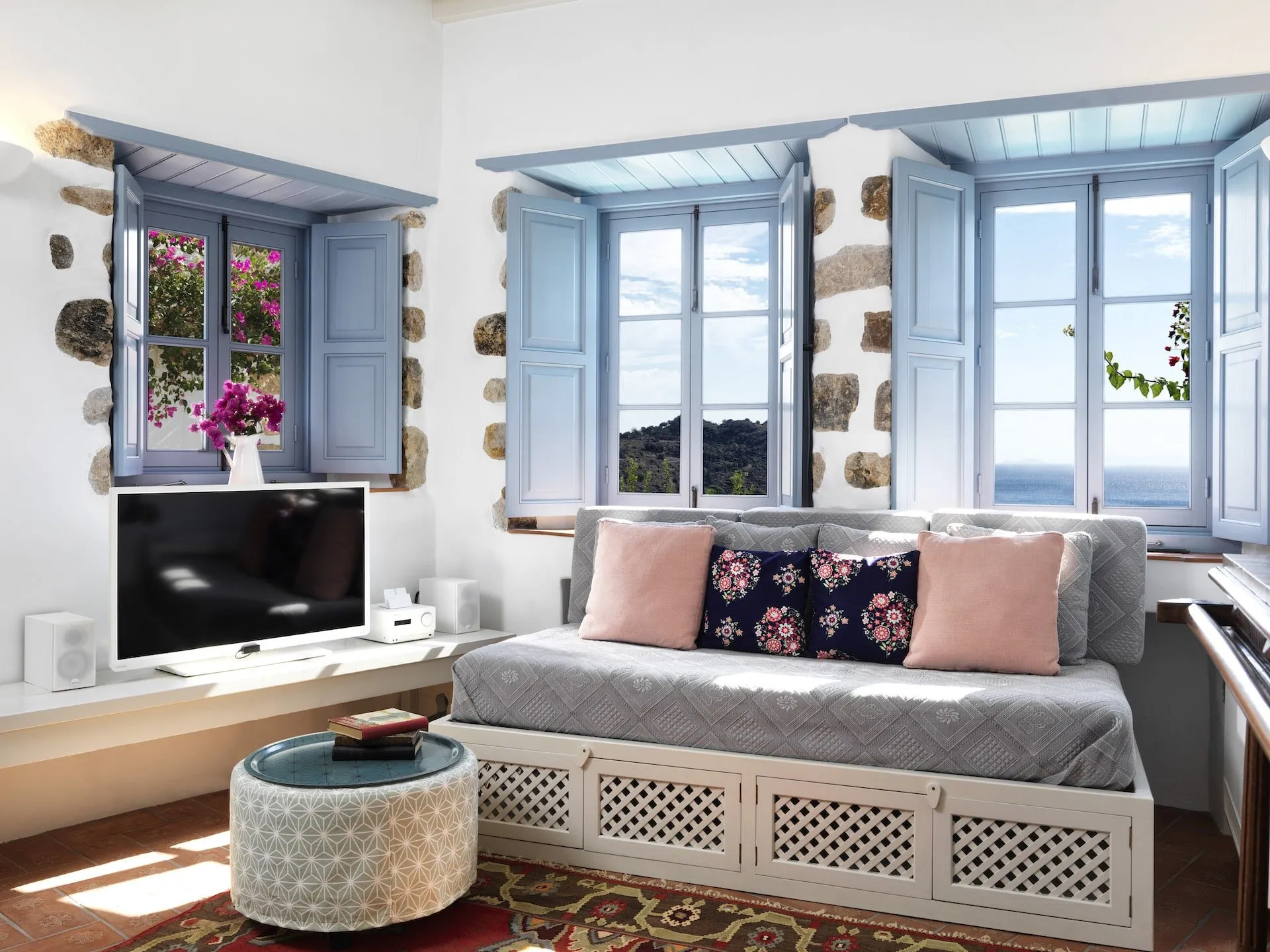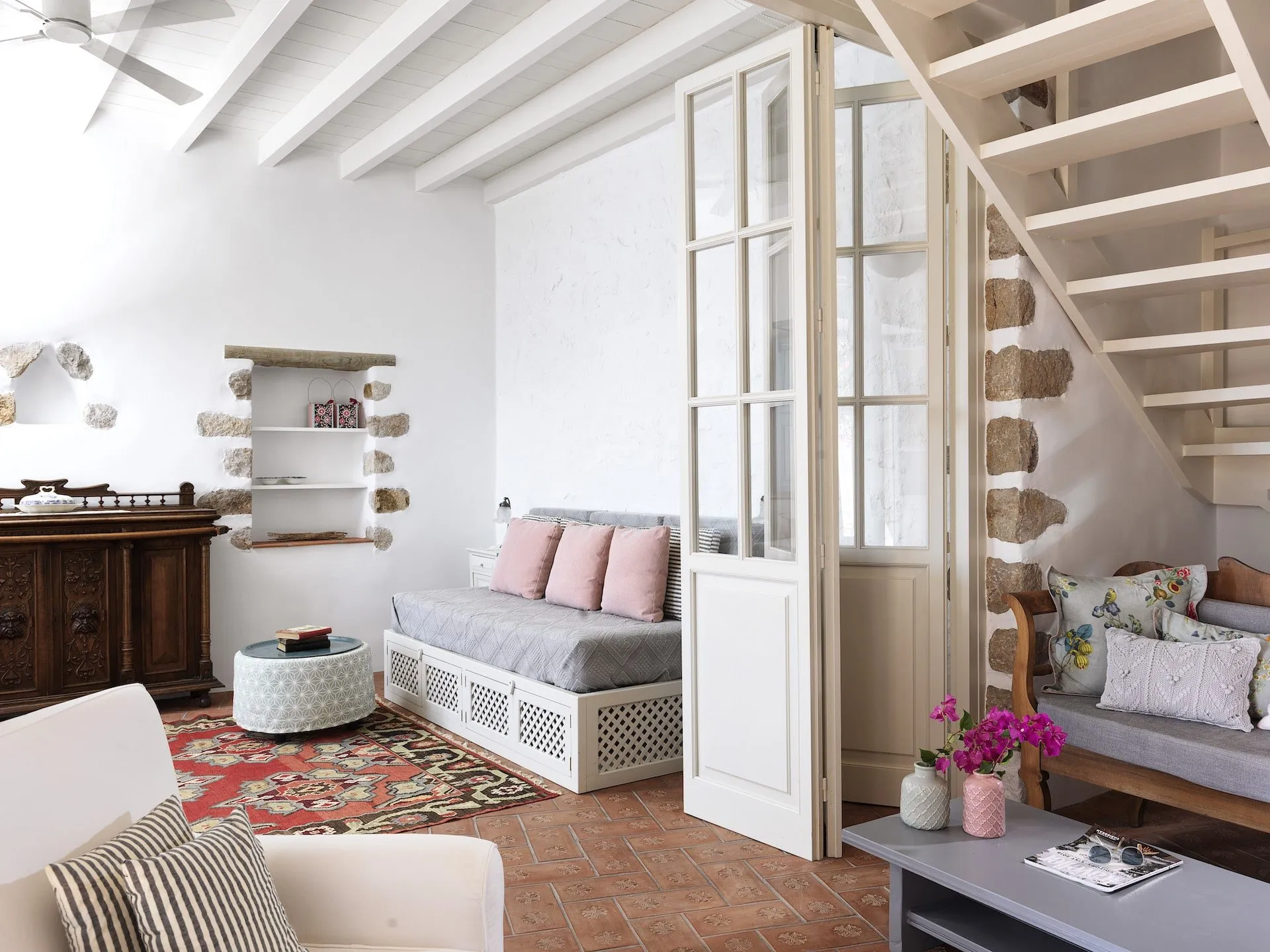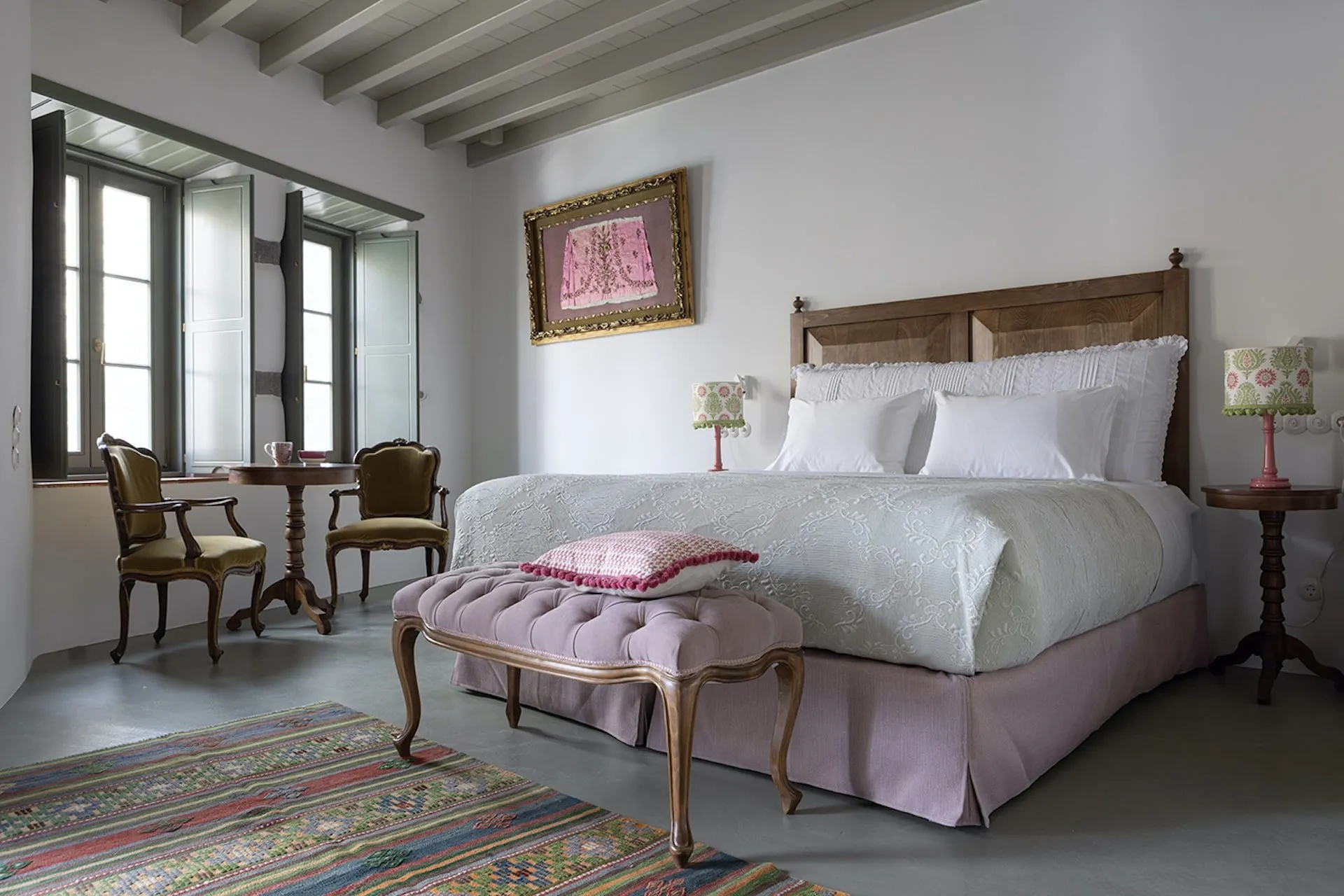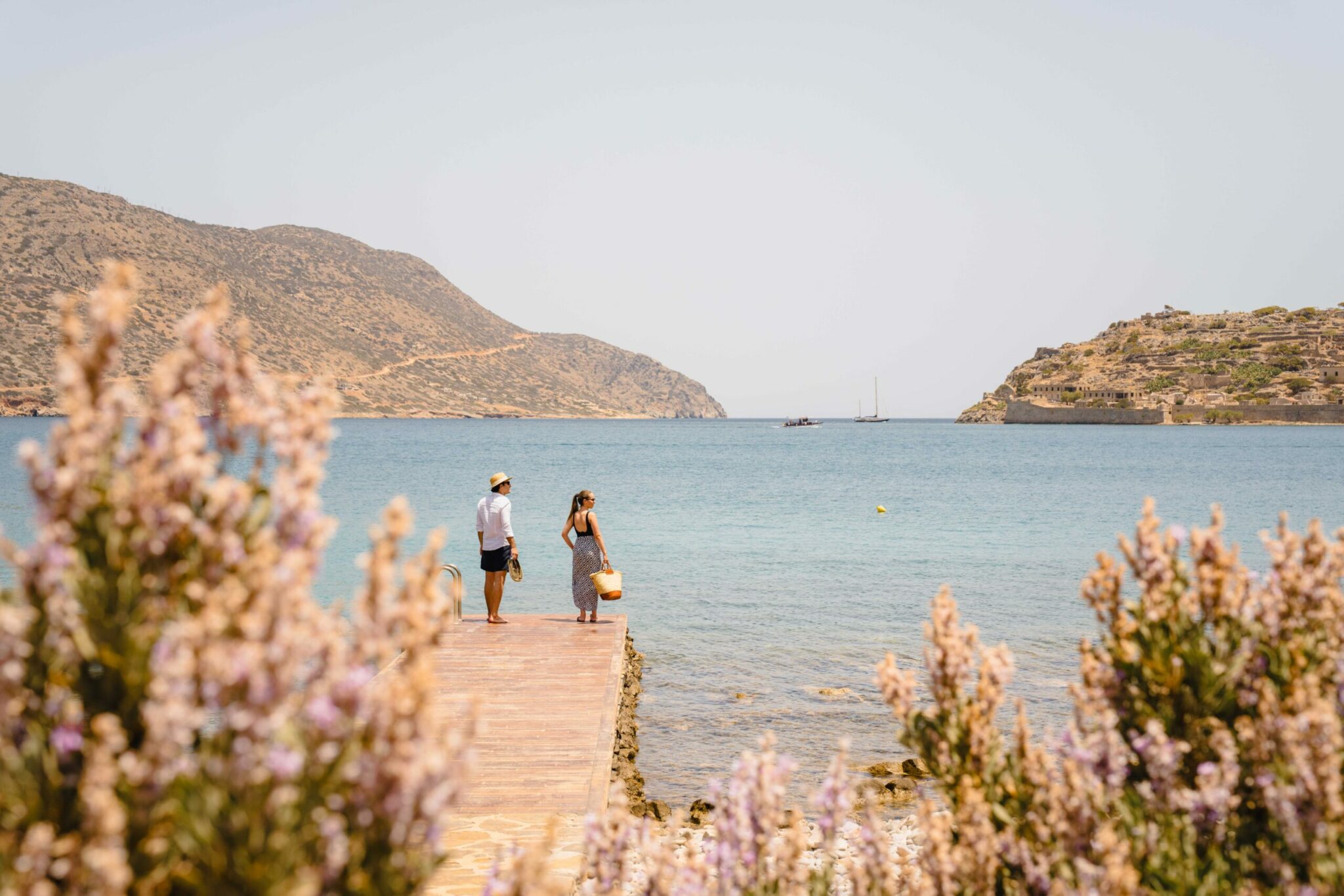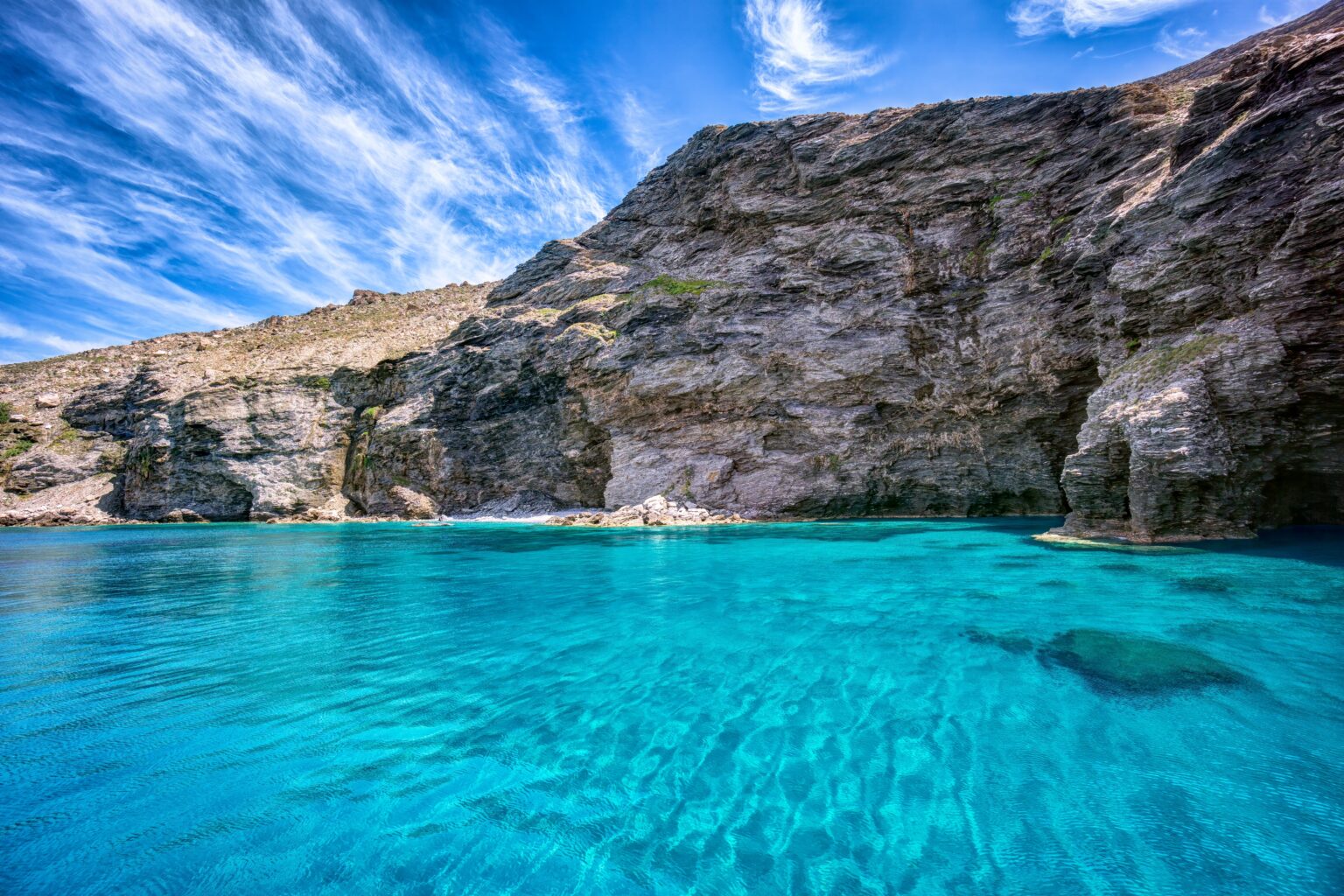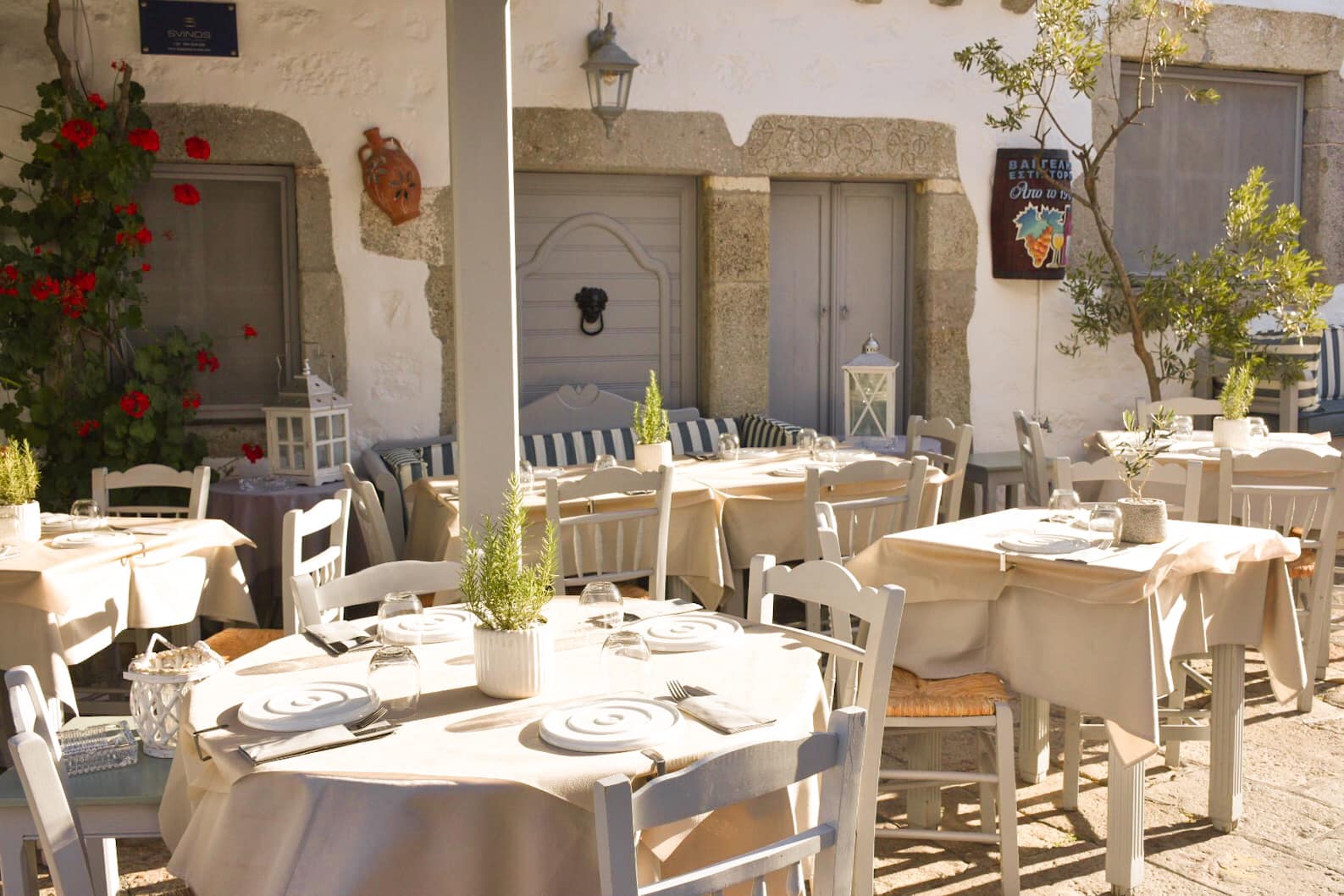It’s called the “Holy Island” and known to all as the “Island of the Apocalypse”. Patmos, the northernmost of the Dodecanese islands, seemingly split in two by a narrow natural bay, is where John the Evangelist heard God’s voice and wrote the Sacred Book of Revelation.
Patmos reveals itself in other ways too: through its calm tones, mystical atmosphere, and understated cosmopolitan charm. The island remains protected from mass tourism. With traditional flavors, its own wine production, museums, historic mansions open to visitors, and dozens of historic churches, Patmos assures us that the 7-hour journey from Piraeus port leads equally to inner reflection and the carefree extroversion that summer demands.
Why go in July
With an increasing number of foreign press articles discovering the authentic beauty of the Aegean islands in the Patmian setting, and a growing number of yachts and cruise ships approaching its lacy shores, it’s preferable to visit Patmos in the relatively quieter July.
The second half of the month, the island will pulse to the rhythm of the 13th Aegean Film Festival, an important cultural institution born here in 2011 as the International Film Festival of Patmos. Between July 18 and 26, this significant international festival for culture, arts, and the environment in the Aegean will screen and compete for 6 awards in various categories: 10 films, 9 documentaries, and 45 short films. Parallel activities will include festive events and an exhibition of works by local artists.
For a more traditional experience, if you’re in Patmos on the eve of Saint Panteleimon’s feast day, July 26, you’ll experience an authentic Patmian festival on Chiliomodi island. Early in the afternoon, take a boat from Skala port to attend Vespers at the picturesque chapel of Saint Panteleimon. Afterwards, join the festivities and learn about the famous “kafedisma” custom – treating guests to Greek coffee, often with rosewater – and taste delicious local cheese pie and sweet dumplings.
What to do
On an island of outstanding religious significance, known throughout the Christian world for its spirituality, the most famous sights are undoubtedly the Monastery of Saint John the Theologian and the Cave of the Apocalypse. On volcanic Patmos, Jesus’ beloved disciple, John, was exiled in 95 AD during Emperor Domitian’s persecutions, finding refuge in a cave midway up the hill between today’s settlements of Skala and Chora.
Open to visitors and attracting thousands of pilgrims, the Cave where John wrote the Book of Revelation and possibly the Gospel of John, as dictated by God and with the help of his disciple Prochorus, impresses with its evocative atmosphere. It’s part of the Monastery of the Apocalypse, both included in UNESCO’s World Heritage List. The Monastery of Saint John the Theologian was founded in 1088 on the site of an ancient temple of Artemis and an early Christian basilica by the monk – later Saint – Christodoulos of Latrinos, with a donation from Byzantine Emperor Alexios I Komnenos.
In the monastery’s outer narthex, you’ll notice ancient columns. Admire the Katholikon of the monastery on the site of Artemis’ temple, with its beautiful 19th-century iconostasis crafted by Chios masters and icons in Russian style. You’ll be impressed by the well-preserved frescoes in both the Katholikon and the Chapel of the Virgin Mary, one of the buildings gradually added to the original monastery over the centuries. A must-see is the Museum-Treasury, the largest museum in the Aegean, housing the parchment of the Purple Codex (late 5th-early 6th century) and Alexios Komnenos’ golden bull. If you’ve secured special permission to visit the Library, you’ll be speechless before the wealth of thousands of manuscripts.
Beyond the monastery’s immense religious value, its architectural importance is undoubtedly unique, as the entire medieval settlement of Patmos’ Chora has developed around the castle-monastery. The contrast of the monastery’s gray stone with the whitewashed traditional houses and elegant restored neoclassical buildings is captivating. A maze of alleys invites you to get lost as you wander under vaulted arcades, discover squares and traditional cafes, stop at tasteful shops, and seek out impressive mansions turned into visitable monuments. Stone reappears in cobbled streets and window sills, around doors, in the charming windmills at Chora’s northwest edge, where you’ll climb to contemplate the sunset.
As time seems frozen somewhere between the Middle Ages and the Revolutionary years, visits to the house of Emmanouil Xanthos, a founding member of the Filiki Eteria who was born in Patmos, to the 17th-18th century Nikolaidis mansion housing an exhibition of archaeological findings alongside photographic evidence of the island’s history, and to Chora’s oldest mansion, the beautiful Simantiri Mansion functioning as a Folklore Museum, help us delve into the multifaceted history of this beautiful island.
The scene changes in the port and largest settlement, Skala, which spreads along the narrow natural bay that almost bisects Patmos. Although it developed late due to frequent pirate raids that forced residents to gather in Chora under the monastery complex, old warehouses have given way to beautiful neoclassical buildings, while structures from the time when Skala was the administrative center of the Italian conquerors still survive.
Full of life and activity, with cheerful bars and well-kept restaurants or tavernas, a modern marina, plenty of shops, and without the restrictions that apply in Chora, it’s the most popular meeting point for nightlife. Gaze at the legend-laden islet of Petrokaravo, climb up to Kastelli, at the top of the low hill that emerges above Skala, for the magical view to Naxos and Ikaria, and to see the remains of Patmos’ ancient acropolis.
To start discovering the island’s amazing beaches, you won’t even need to travel great distances: Hochlakas is a small, pebbly beach behind Skala; near the port you can cool off on the organized sand of Agios Theologos; while just 5 km south you’ll find yourself in the fully equipped seaside village of Grikos with its namesake sandy beach and view of Tragonisi islet.
On Patmos’ southern side, the sight of the famous Kalikatsou rock is unique, especially in the afternoon when the sun paints the rocky promontory with its carved steps in orange hues. It was considered an outdoor sanctuary of Aphrodite and later became a hermitage for monks. In the north of the island, the beach of Kato Kampos, lush with fruit trees, olives, pines, and eucalyptus, is popular; Vagia is serene and unorganized with vibrant, cool waters; and dives in Lampi are magical, with colorful pebbles shining in the sun, giving the beach its name. A wonderful experience is taking a boat to Psili Ammos with its thick, golden sand and almost exotic waters.
Where to stay
Generous in spirit of hospitality as well as in impressive, panoramic views, Patmos Eye is not just a masterpiece of island aesthetics, but also a living piece of a love story that of owners Marietta and Fredy for Patmos’ charming aura. From 2000 when the young couple discovered the island, to 2014 when they found a way to stay forever by building the wonderful Patmos Eye complex – a boutique hotel and four additional villas – many holidays on the Island of the Apocalypse intervened, and a love for this unique place proved very strong.
Overlooking Skala bay and just 400 meters from the port, the spacious villas were completed first, reviving the style of imposing Patmian mansions of bygone eras and incorporating typical island structural elements such as stone arches, terracotta floors, and exposed stones in white walls. The island breeze, like the enchanting view, invades from balconies and windows, reaches behind the gossamer curtains of beds, caresses the senses during moments of relaxation in outdoor sitting areas or private pools, which three of the four villas have. Ranging in size from 75 to 190 sq.m., on one or two levels, with fully equipped kitchens and welcoming dining areas with traditional furniture, they become an idyllic refuge for families and groups of friends up to 8 people, a real retreat that gives the feeling of a private, tranquil paradise while being so close to the center of action.
This year, the tasteful rooms and suites of Patmos Eye were added, remaining faithful to the spirit of authenticity, refined elegance, and personalized hospitality that distinguishes the island itself and the couple’s vision for the kind of services they want to offer. Wooden beds, bedding with lace trimmings that seem to have come from grandmother’s wardrobe, mirrors and decorative items bearing the patina of time, modern, thoughtful amenities, private pools, spacious verandas, outdoor dining areas, and always the same view you never tire of at any time of day, characterize a hotel that faithfully renders the sophisticated character of Patmos – its history, spirituality, and understated cosmopolitanism.
Διαβάστε ακόμα:
Οι καλύτερες πολιτιστικές επιλογές στην Πάτμο
Οι κορυφαίες δραστηριότητες στην Πάτμο
Μια περιήγηση στην Πάτμο -Στάση στα πιο εμβληματικά σημεία του νησιού



